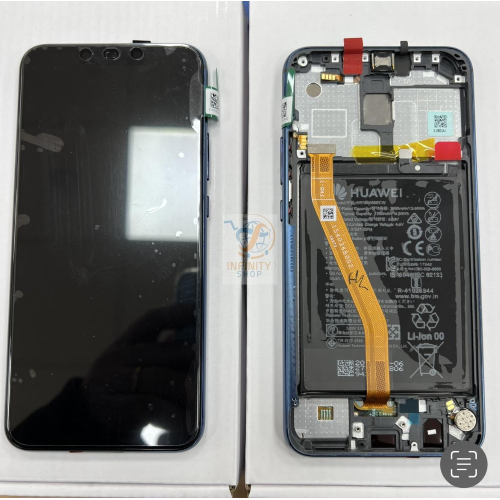
Huawei Mate LCD Repair
Sometimes, your Huawei Mate series phone may end up with display problems such as a cracked LCD screen or a malfunctioning touch panel. Fortunately, these issues can be fixed at home with the right tools and a little bit of patience.
This monitor supports wireless projection and real color display. It also has low blue light and flicker free certification.
Color gamut
The Huawei Mate S is a stunning-looking monitor with slim bezels (6mm at the top and sides, 9.3mm at the bottom) and a 3:2 aspect ratio that gives it a distinctive look. It features a beautiful, vegan leather back that’s made from durable Kunlun glass. The screen has a high brightness of 185 nits and an impressive contrast ratio of 1321:1, which creates loads of depth. It also has a great initial calibration and a decent grayscale performance, although the blues are a little too high.
This monitor is designed for style-conscious creatives who demand top-notch colour accuracy and a wide colour gamut. Its IPS panel can display 100% of the sRGB imaging color space and 98% of the much wider DCI-P3 video color space, with a Delta E of less than 2. It also has HDR 400 certification and a decent 500-nit maximum brightness.
The display is also free of PWM (pulse-width modulation), which can cause flickering and eye fatigue. It has passed the TUV Rheinland Low Blue Light and Flicker-Free certification, and it offers a wide range of display adjustments to keep your eyes comfortable all day long. It also has HDMI and mini-DisplayPort connections for connecting to your devices, Huawei Mate LCD as well as a USB-C port that supports display inputs, data transfers and 65W power delivery.
Contrast ratio
The Huawei Mate LCD stands out from the pack of 28-inch monitors in several ways. It boasts a sleek minimalist design, a 4K+ resolution, and lots of connectivity options. It also has a distinctive 3:2 aspect ratio, which makes it perfect for pairing with Huawei’s MateBook laptops and Microsoft Surface tablets.
The Mate LCD’s IPS panel is manufactured by JDI and uses the same display driver IC found in last year’s Mate 7. This enables the screen to achieve impressive contrast ratios, especially at low brightness levels. However, the display has a few issues that hold it back from competing with the best in class.
For example, the Mate LCD has a relatively high level of backlight variance in our tests. At 100% brightness, the corners and edges were between 15 and 21% dimmer than the centre. This is a problem because it reduces the overall accuracy of the display.
Thankfully, the Huawei Mate LCD improves significantly when Huawei Mate LCD calibrated. With a calibration using DataColor SpyderX, the display managed to reach 90% P3 and 99.7% sRGB coverage, as well as excellent grayscale performance. However, the display still suffers from a green tint, which could make it less than ideal for working with colour in a professional setting.
Viewing angle
Huawei Mate LCD displays have good viewing angles and are ideal for home, office, or travel. They are also great for gaming or working on projects. These displays have a high-resolution screen with narrow bezels, which make it easy to work with multiple documents at once. They also offer a wide variety of features and are easy to set up. These displays have a large color gamut and are able to show true-to-life colors. The display is also able to produce a high contrast ratio and a low black point. These features make the device ideal for displaying graphics and videos.
This device is a top performer in our Mobile Display test, with excellent picture quality and color accuracy. However, the screen is prone to image processing “enhancements” that skew the colors and contrast. This is a common problem with smartphones.
The Mate 7’s default color temperature is 6605K, with very green whites. However, you can adjust the color temperature to a warmer value, but it is a shot in the dark. Getting outstanding color accuracy with the Mate 7 is almost impossible without accurate calibration equipment. The Mate 8 is configured at a cooler 7239K, with bluer whites. This is a better choice for most people. However, the display can still suffer from poor viewing angles and a tendency to degrade rapidly with tilt.
Power consumption
Huawei’s Mate series is known for its long battery life, and the Mate 8 lives up to that reputation. This phone uses a large 4000 mAh battery and features extra power management tools that make it stand out from other Android phones. The display is another highlight of the device, with excellent viewing angles and a high contrast ratio.
Unlike the Mate 7, which used an AMOLED display, the Mate 8 uses an LCD panel. This is a good decision because AMOLED screens use more energy than LCD panels. It is also important to note that AMOLED displays tend to have a lower peak brightness than LCDs, which can lead to better battery performance.
The display’s maximum luminance is very good at 527 cd/m2, and the black value is very low at 0.35 cd/m2. These are very good values for an IPS LCD, and they provide excellent contrast ratios. In our tests, the Mate 8 was able to match the performance of the LG G4.
The display also has a built-in beauty mode that allows you to tweak the look of your pictures. This feature can remove imperfections, like eye bags and blemishes. You can even choose from a variety of different effects, such as soft focus and sepia. We tested the feature with Ubergizmo co-founder Hubert Nguyen, and it worked well.
